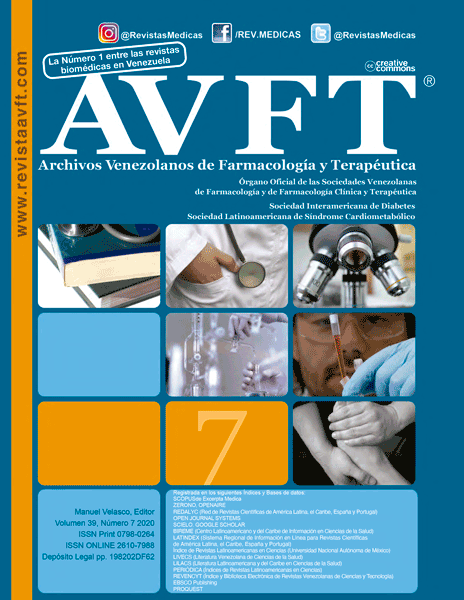Effect of α2-Adrenoreceptors stimulation after blockade of the current activated by hyperpolarization, if, in 6-week-old rat’s isolated heart
Palabras clave:
α2-adrenoreceptors, If-currents, isolated heart, rat.Resumen
Adrenergic receptors agonists are widely used to treat cardiovascular diseases. All 3 subtypes of α2-adrenergic receptors (α2-AR) have been found in the human heart using the polymerase chain reaction. Radioligand test and immunoblotting revealed α2-AR in the myocardium of normotensive and also spontaneously hypertensive rats. The evidence demonstrated the interaction of α2-AR and If in the relief of mechanical and thermal pain. The α2-AR agonist, clonidine, by inhibiting HCN channels, causes a strong bradycardic effect. The objective of this research is to study the effect of the activation of α2-AR in the presence of the blockade of If with ZD7288, on the parameters of the isolated rat heart after the formation of adrenergic regulation of the heart. Experiments on isolated hearts were performed ex vivo, using the Langendorff-isolated heart preparation. During the study, the coronary flow (CF), heart rate (HR), pressure wave amplitude (PWA), maximum wave rise rate (dP/dtmax), maximum wave drop rate (dP/dtmin) were studied. The findings demonstrate a role of α2-AR and If in the adrenergic regulation mechanisms of the function of an isolated heart of 6-week-old rats, since they showed that the blockade of If with ZD7288, caused an increase in heart inotropy, as well as multidirectional effects on the rhythm and blood flow of the isolated rat heart after the formation of adrenergic innervation.




